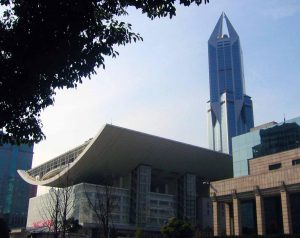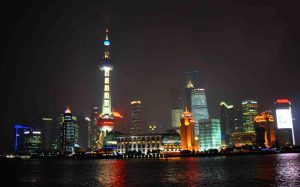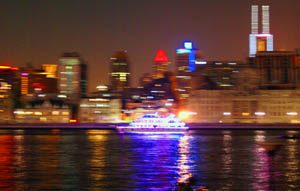Shanghai History

Shanghai Tourist Attractions offer our students plenty to explore besides the work in the Shanghai East Hospital. Shanghai, now one of China’s biggest and economically most influential cities, was for a large part of its 2,000 year-old history a small and insignificant fisher-village. Shanghai’s evolution to one of the worlds’s most modern and sophisticated cities in present days was not sparked until the British opened a concession following the first Opium War in 1842. Soon thereafter, other countries – like France, the USA and Japan – followed suit and opened up their own concessions. From that point onwards, Shanghai soon grew in importance as a major economical center and trading port and is currently China’s second largest city with a population of about 18 million. At present, Shanghai’s quickly growing poulation can be viewed as the economic capital of mainland China with a growing percentage of Chinas in- and export business passing through. The extremely internationalized metropole is also often referred to as the ‘NewYork’ of the East and one can indeed hear a multitude of spoken languages from all corners of the world in its busy streets. Due to massive reconstruction and constant economic development and renewal, the ‘older’ parts of Shanghai with its charming and even romantic, but poor and unrenovated building structure is still disappearing fast – making way to super-scyscrapers and steel-and-glass architecture.
The Bund

The Bund consists of a promenade of nineteenth century colonial buildings and is considered one of Shanghai’s most scenic spots. With its many upscale shopping venues and bars, The Bund attracts many tourists and locals alike.
Originally the name “The Bund” – derived from the word “embankment” – was given to the British settlement area which was given to them in 1842 following the Treaty of Nanjing after the Opium War. The Bund soon emerged as Shanghai’s richest and most prosperous part by the beginning of the 20th century and became also known as the “Wall Street of Asia”.
The Bund spans about one mile on the western bank of the Huang-Pu river and is probably one of Shanghai’s most well known and most visited of all Shanghai Tourist Attractions and the most popular sightseeing spot besides the old city. The multitude of historical buildings, many of which had once been counted towards the tallest buildings in the world at some point, create an atmosphere of elegance and put the visitor instantly in touch with the history of Shanghai. This unique architecture is nowadays not only housing business and banking branches, but one can find a multitude of quite famous, but often pricy, bars and clubs on the upper stories and terraces overlooking the Bund. The Bund is worth a visit at day and night. The view of Pudong on the other side of the river can be breathtaking.
People’s Square

People Square park is found at the site of the former colonial horse racing track and is home to a number of Shanghai’s government buildings, museums and concert halls. Amongst them are the Shanghai Art Museum – occupying the old Racecourse Clubhouse – the Shanghai City Hall, the Shanghai Grand Theatre, the Shanghai Urban Planning Exhibition Hall, and last but not least the Shanghai Museum of Contemporary Art. The huge square is surrounded by many key landmark buildings, such as the Shimao International Plaza, Tomorrow Square and Raffle’s Square. The skyscrapers do not count to the tallest buildings in Shanghai, which are located in the borrough of PuDong, but still offer an impressive sight during the day and, more importantly, one of the most fabulous nocturnal scenery with their myriad of lights. The People Square Subway Station under the park is one of the busiest subway crossings in the world as most major subway lines of Shanghai meet here. The station has to handle an excess of 700,000 passengers daily. The gigantic underground system of halls and large tunnels below the park spans over the entire area and features many shopping and market areas for the hurried passer-by’s or tourists looking for souvenirs. A visit of People’s Square should reserve some extra time to visit the many museums, explore the surrounding shopping malls, take a comfortable rest within the park, and finally to check out the underground network of touristy markets for a finish.
Old City & Yu Garden

The old city is the center around which modern Shanghai has grown and even nowadays the cities historical heart. This part of the city draws the most visitors of all of the Shanghai Tourist Attractions. The old city is believed to be established by the Song Dynasty (1127 – 1279) and occupied a circular walled-in space at the western bank of the HuangPu River. The major part of the old city consists of a large tourist-bazaar containing small shops, restaurants, temples, and much activity. In its center lies a small lake spanned by a zig-zagged bridge (Bridge of the Nine Turnings / Jiuqu Quiao – the reason for the serpentines lies in the belief that evil spirits can only move in straight lines). Immediately neighboring the lake, lies Yu Garden, which is worth visiting. The relatively small garden (only about 5 acres big) offers 30 pavillions surrounded by carefully planned landscape-designs of the Ming and Quing dynasties. The landscapes are made of small lakes, rivers, bridges, mountains, corridors, and walls. If you visit Yu Garden, it is best to see it very early in the day to get an impresiion of the intriguing beauty of the architectural quite interesting park with its many views and secluded hideouts. If you visit at opening time already you will avoid the masses of tourists, who flock in towards the afternoons when the waiting lines are quite long and Yu Garden is filled with many hundred visitors.
Xintiandi

Xintiandi lies in the heart of Shanghai and is a gem of Shanghainese architecture. This small area – nowadays mainly offering restaurants, bars, small boutiques, and galleries – came into existence by a project to conserve the unique architecture of an old and run down quarter of Shanghai. Here you can still see the old Shikumen architecture style with its many winding alleys – almost all Shikumen buildings in Shanghai had to yield to the contruction of modern steel and glass buildings over the past decade and if you still find some of the old quarters standing, they are usually in quite bad condition and have not been renovated at all. The small building complex is a great location to glimpse a view of how Shanghai has looked before the building boom has started and thus also home of the Museum for Shanghainese Architecture. The museum is, by the way, in the very same building, in which China’s Communist Party held its first congress back in 1921. Xintiandi is nowadays mainly known for its vibrant – and western style – bar scene and nightlife. However, most stores and bars in Xintiandi are quite pricy and you will meet almost exclusively tourists and Expats around. Some of the beautiques within the complex do offer intersting fashion and clothing worth checking out.
Nanjing Road

Nanjing-Dong-Lu, as it is called in Chinese, is Shanghai’s presumably most well known shopping street and spans over approximately 3.4-miles in length. The eastern part of the street – from the Bund to People’s Square – is a pedestrian area with many restaurants and shops, which offer very radiant scenery at night due to the myriad of colorful neon signs. The western part of the street – from People Square to Jing’an Temple – is well known for its luxury shopping possibilities and draws many fashion-seeking buyers and designers looking for the newest trends alike. Even though many new buildings displaying glass and steal architecture have already been constructed in this area, the faded charm of the former colonial French Concession can still be felt when passing the surviving buildings from the 1920’s with their nicely kept gardens and balconies. If your looking for the must see Shanghai Tourist Attractions, a visit of the pedestrian street in the eastern pedestrian street after dusk will be sure to provide a lasting memory for all visitors of Shanghai. Especially when visiting later in the day, it is a good advise to to protect your belongings against the occasional pick-pockets, who are seen around the pedestrian area – especially if the street is getting crowded. As a visitor, one also needs to watch out for the frequently attemted scams, as for example Chinese persons, who pretend to want to talk to you in order to practice their English often suggest to visit a seemingly random tea-house or restaurant which will present you with an unjustified large bill to pay at the end!! There are various other scams occasionally, so please be cautious.
Pudong

Pudong – the newest of Shanghai’s boroughs displays what China is striving for in the future. No borrough has more to show when it comes to modern Shanghai Tourist Attractions. With its three dominating highrise buildings – the Oriental Pearl Tower, the Jin Mao Tower, and the Shanghai World Financial Center – it is visible from many sites of Shanghai. The smallest of these buildings, the Oriental Pearl TV Tower rises 468 meters above ground. The Jin Mao Tower, currently the worlds 10th highest building rises with its 88 stories of unique architecture 420.5 meters into the sky and is surpassed by the immense Shanghai World Financial Center, which counts 101 floors and rises to a height of 492 meters – Currently the Shanghai World Financial Center is the third highest building worldwide. The newest of the three scyscrapers is the ‘Shanghai Tower’ – this building has been opening in 2016 and counts a dazzling 128 floors with a height of 632 meters – making it the highest building in Shanghai and the world’s second highest building (The Burj Khalifa in Dubai is currently ranking number one). Pudong is also home of the Shanghai Stock Exchange (which is right across the Street of the Shanghai East Hospital) the Shanghai Ocean Aquarium, the Science and Technology Museum, the Superbrand Mall, the Oriental Arts Center and many other tourist attractions. The Shanghai East Hospital is located in Pudong as well and all of the mentioned attractions are easily reachable by foot from the Shanghai East Hospital.
HuangPu River

The HuangPu River offers a spectacular view of both, the old, and the new Shanghai. During the round trip you can enjoy the entire length of the enigmatic Bund on one side, and the futuristic skyline of Pudong on the other. The cruise then continuous on downstream and leads under the impressive YangPu Bridge. During the cruise, you can also observe the lively ship-traffic, consisting mainly of large barges, up close. The river cruise leaves its harbor daily. It is recommended to take advantage of the night cruise in order to observe the splendid lights of Pudong and of The Bund. Current information about the times and fares can be found here.
